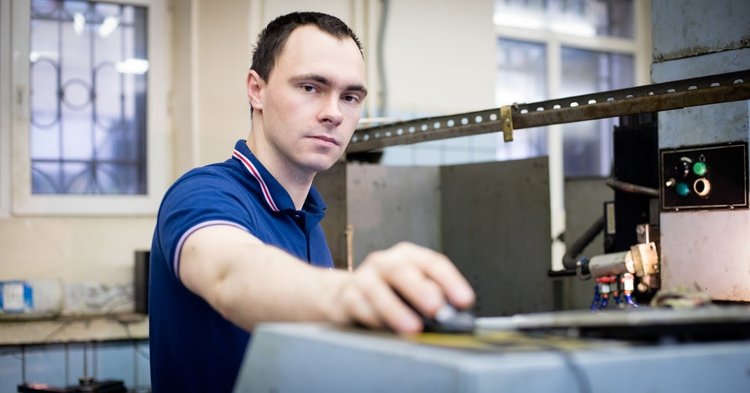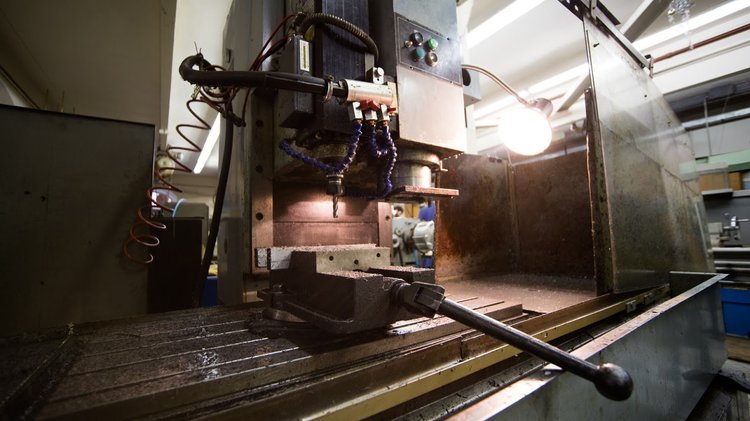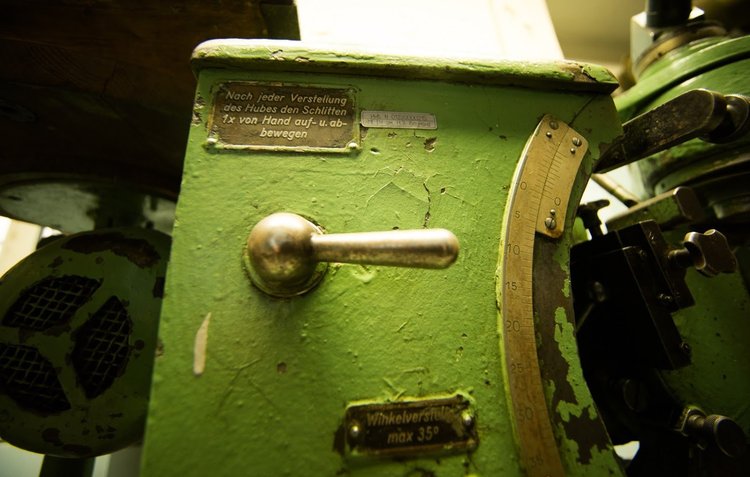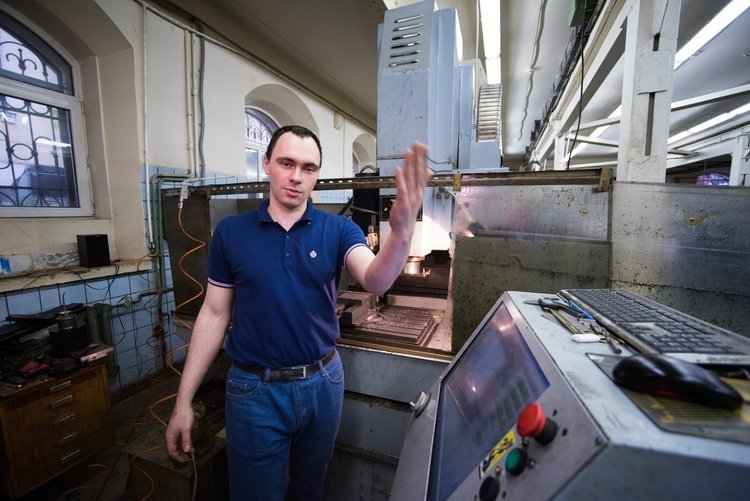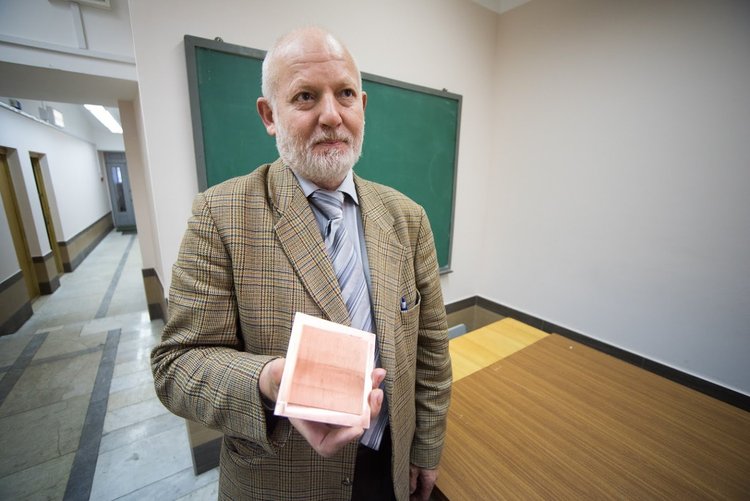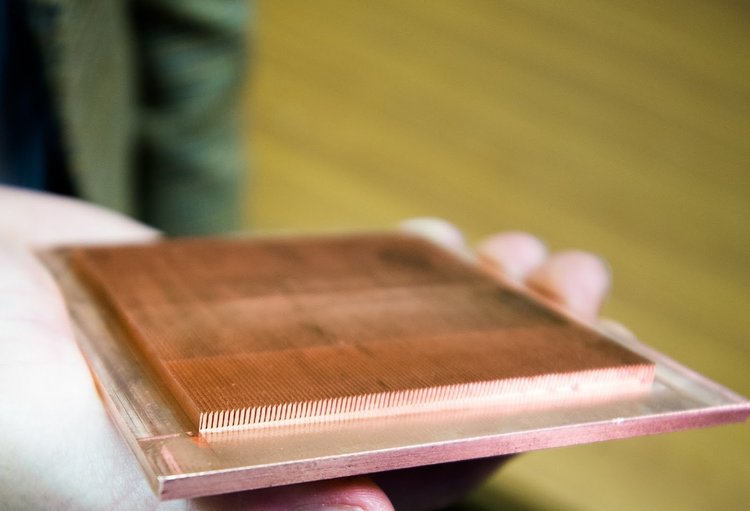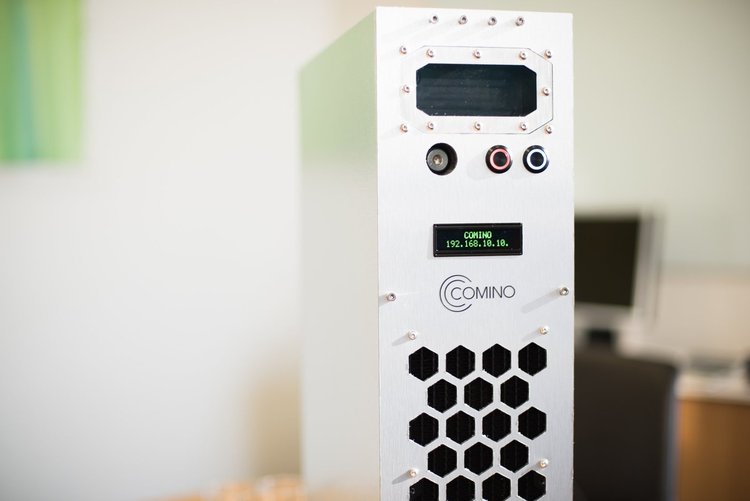The editorial team of Insider.Pro visited one of the best technical universities in Russia, Bauman Moscow State Technical University (MSTU), or as Russians simply call it ‘Baumanka’. We spoke with people involved in the creation of new technical solutions, to Professor Nikolai Zubkov and to a staff member of the department, engineer-technologist Alexander Cherkasov.
We discussed the problems of modern education in Russia, stopped by a laboratory with Soviet machines, learned how the technology, which IBM and electric vehicle manufacturers are using today was invented, and how scientists of the department helped the country during the World War Two. As a bonus we also tell you how today's achievements of the same department help cryptocurrency miners.
- Alexander, tell us a little about yourself and what do you do in the university?
I work at the department of MT-2, where we are now, it is called "Tool Techniques.” Cutting tool technologies is what they teach here. I came to this department when I was still in school as part of the "Step into the future" program, with my own invention, a desktop CNC milling machine. Now I am responsible for preparing and conducting laboratory sessions for students, as well as conducting researches.
- You work at one of the best universities in the country, how do you overall assess the quality of modern education in our technical universities?
The quality of education, at least in the sphere of engineering, leaves much to be desired of course. There are five or seven good universities throughout the country, which are more or less trying to maintain the quality of education at an acceptable level, and Baumanka is among them. But with all our efforts, we are still pretty much dependent on the Ministry of Education and Science of the Russian Federation. The entire modern system of higher education in Russia is far from perfect. Useless bureaucratic papers, miserable state funding for science in universities, ridiculous salaries for engineering staff and pathetic scholarships for undergraduate and graduate students, this is what we have.
Back in the Soviet Union, if a student failed examinations, he or she would immediately be dismissed from the course, but today the Ministry of Education does not welcome expulsions. If you get expelled, it means that you were poorly taught and the state money was spent in vein. This is why today’s students, who have such academic ‘debts’, can go on an academic leave of absence and eventually defend their diplomas. The situation in departments, which prepare specialists for the military-industrial complex and the aerospace industry, is a bit better, since general technical disciplines are taught at the same departments. Real incentives to improve the quality of their work - apart from altruism – are practically nonexistent. So I’d say the situation is not that great.
- There are so many machines around; do you enjoy working with them? Are you keen on this job?
I first got behind the machine in 2006, when I was thirteen years old. Since then I cannot tear myself apart from it, it’s both my hobby and my job. I like to pass on the knowledge to my students, it's very nice to see at least a few interested people in the group, it means I'm not working in vein.
- How new is the equipment here, are there any modern machines at all?
Frankly speaking, the equipment we have here is not the newest. But for teaching the basics of cutting, this is even better. Take a look at any modern machine, it looks like an iPhone: the processing area is closed, all processes occur behind the glass and at huge speeds. It is almost impossible to see something in depth behind the waterfalls of the cooling liquid. While with the universal handheld machine, we can perfectly work on the details at a low speed, and students can see the processing zone itself. So for laboratory works, machines from the 50s are even better than the latest ones.
But as soon as we move away from the basics, everything becomes deplorable. Unfortunately, there is practically no way to show any real modern processing. There are only two CNC (computer numerical control) machines in our laboratory. Yes, in theory we do have an opportunity to take our students out to some shops, but this is nothing more than just any school trip. To make any highly scientific experiments at those shops, however nice they are, would not be allowed, as it will simply ruin their production schedule. So we just go there as visitors, to show our students a little bit of modern processing not only on videos.
- Many believe that production machinery cannot become obsolete and that it can be used for decades. Is it so?
As I mentioned, it is important to understand the difference between education and production. It's still not the same thing. For learning purposes, we only need the machine to rotate. But for the production, of course, this is not enough, as you need to process the parts quickly and efficiently, and it is simply impossible to do that with the old machines. For example, if you compare a CNC machine that was ultra modern in the late 80s to the one today, you’ll see that the productivity in batch production differs up to 40 times!
- Is it difficult to manage a computerized machine?
Of course, managing a CNC machine is not as easy as it is with the manual. But it's much easier to work on it. On a universal machine, we select the required modes by a dozen of levers, press the handle and the processing begins. The tool, as a rule, can move only in the simplest trajectories, a straight line or a circle. As we pass one section of the trajectory, we need to manually return back. Everything is different with modern equipment. The main thing in processing is to correctly make a control program, denoting all the trajectories in it, modes, any auxiliary actions, and even an inclusion of illumination if necessary. When setting up the machine, you don’t do anything physically; everything is done on a PC or touch screen. In addition, CNC machines have many functions, which in principle are not available on universal ones. As a result, it is much faster and better to manufacture parts more complicated than bushings on CNC machines.
- Tell us about the inventions of your department; what was invented in the past and recently?
Our department was founded in 1930, and already back then there were inventions meeting not only the USSR standards, but also world standards. Unfortunately, the peak of the most important inventions falls on the sad page of our history, the war. Our department developed and introduced the technology of milling tank armor with corn mills; a tool resembling corncob. This invention, coupled with the introduction of the department of welding technology of automatic armor welding, allowed to increase the production of tanks in multiple times. Just think about it: at the culmination period of the World War Two, in 1943, the Soviet industry in one month released about 3 thousand tanks and self-propelled guns. The industry of Germany, which was manually brewing armor during the entire war and milling it with ordinary cutters, had a peak index of about 450 tanks. For the invention of this corn mill, several employees of the department were awarded a Stalin Prize.
The second most important line of business was an ultra precision machining, in other words, obtaining details of nanometric and subnanometric accuracy. For example, under the guidance of our professors, in the optics processing, including mirrors for high-power lasers, which were planned for shooting down American ballistic missiles, there were obtained the best in the world results in terms of accuracy.
Finally, another important invention made at the department, was the deformational cutting technology. Many years ago, one of the graduate students was simply sharpening copper to study the chips. During the process, his chisel chopped off and the chips did not separate completely from the billet, partially remaining attached to it. Most people would just trim the chisel and continue working, but not that graduate student. He left the chisel for some time, defended his thesis and returned to this topic. The chisel was studied and measured. As a result, a unique technology was born to produce more complex structures with vast productivity. It was first introduced to heat exchangers. In the beginning they were just heat-exchanging pipes, then it moved to the systems of computer water-cooling equipment. With the help of this technology, plates with large area of contact with the liquid are made.
- Can you give an example of using water-cooling? How does it work?
The flat side of the plate is pressed against the object being cooled, whether it's a microchip, waveguide or an IGBT transistor in an electric car. On the other hand, through the developed structure, edges or thorns, the cooling liquid is pumped, carrying with it the heat released by the object. The company, which develops deformational cutting technology in the US, produces tens of thousands of water blocks for IBM. We introduced our water blocks into special systems for the needs of the Federal Security Service of the Russian Federation and the Ministry of Defense, and reduced the area occupied by the equipment by five to seven times. The process, unfortunately, did not go further than the implementation stage.
- We are very lucky as the inventor of the deformational cutting technology, doctor of technical sciences, professor, as well as the author of more than 100 scientific works, including 25 inventions and 5 international patents, Nikolai Zubkov is now at the department. Dr. Zubkov, can you please tell us about your work?
The deformational cutting technology is based on a combination of two physical processes: destruction and purposeful plastic deformation of the work piece material. In simple words, the surface layer of the material is trimmed, while remaining connected to the work piece. This technology allows to obtain a macro relief on such materials as copper, aluminum and their alloys, titanium, steel, plastics, etc., with the possibility of increasing the surface area after processing up to 12 times.
This method is patented in the US and Europe and was six times awarded gold medals at international exhibitions of inventions and innovations in Geneva, Brussels, Nuremberg, Seoul, Moscow and Kuala Lumpur.
- How is this technology used in practice?
This method has a wide range of uses, but the main one is the intensification of heat transfer. Due to a large increase in the surface area, as well as the features of the relief obtained, the effective heat transfer coefficient increases up to 10 times in comparison with a smooth surface. This advantage has found use in systems of water cooling of microprocessor engineering and power electronics.
- Could you please tell us more about cooling?
Many works have been published about this topic. But once again, the main characteristic of this method is that it is possible to significantly improve the efficiency of liquid cooling. And it, in turn, is used in many spheres as the most effective one, such as in machine building, robotics, household appliances, computers and much more. Liquid cooling in computers became more popular, because in the long run it is much more profitable. The cost of production of data centers is reduced, less power is spent to cool chips, and apart from that fewer personnel are needed to be serviced. There are now more and more companies offering such solutions, and it is becoming more accessible. Not so long ago, liquid cooling systems were very expensive, and only large companies such as IBM could afford such a technology. Today, liquid cooling came out to the masses.
- Nikolai Nikolayevich, Alexander, thank you for the interview and for the opportunity to take photos. We wish you good luck in everything.
We knowingly asked about cooling. With the increasing popularity of mining, a lot of people want make money this way. But not everyone has the experience of creating farms from scratch: if you do not carefully consider all the details, the device for cryptocurrency mining can heat to an extent that it may even break down.
This problem was solved by Comino startup, whose team created the world's first liquid-cooled GPU-farm. The device is not only for ETH and other cryptocurrencies mining, but it can also be used to heat your house. Alexander is part of this startup as a co-founder and director of design engineering.

